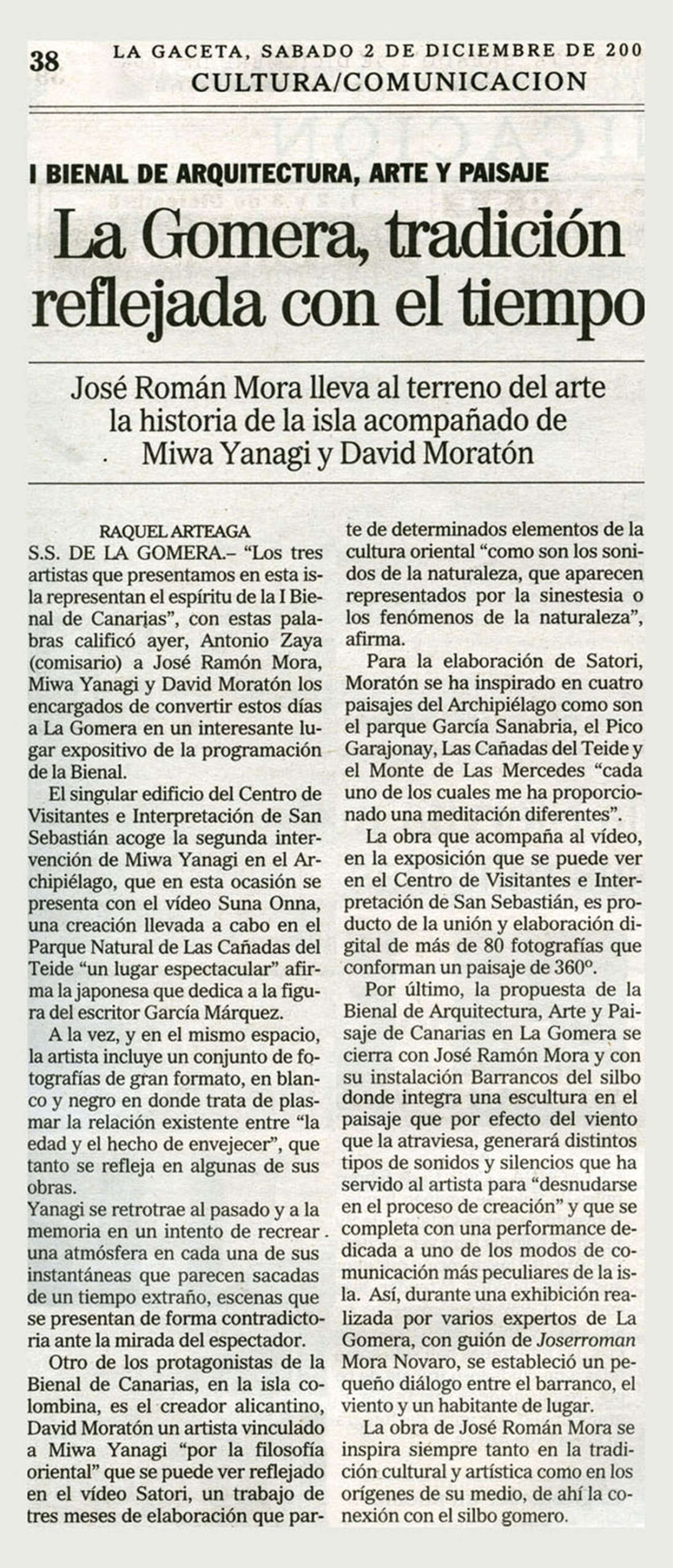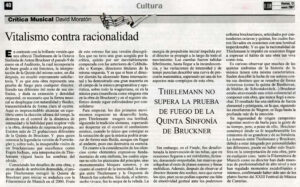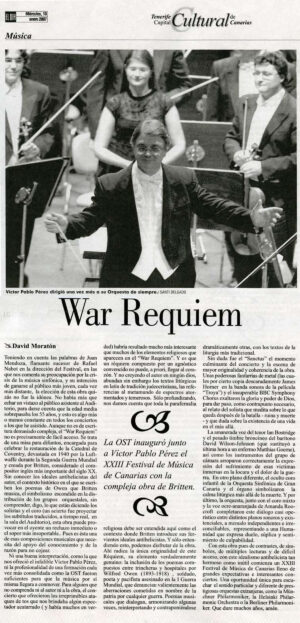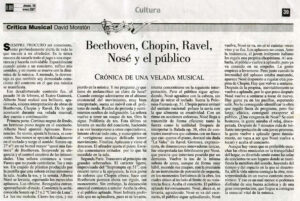La Gomera, Tradition Reflected Through Time
José Román Mora brings the island’s history into the realm of art, accompanied by Miwa Yanagi and David Moratón
RAQUEL ARTEAGA — San Sebastián de La Gomera
“The three artists we present on this island represent the spirit of the 1st Biennial of the Canary Islands,” said Antonio Zaya (curator), referring to José Román Mora, Miwa Yanagi, and David Moratón — the artists responsible for transforming La Gomera into an exciting exhibition site for the Biennial’s program.
The unique building of the Visitor and Interpretation Center in San Sebastián hosts Miwa Yanagi’s second intervention in the Archipelago. This time, the Japanese artist presents the video Suna Onna, a creation made in the Teide National Park — “a symbolic place in the island’s memory,” she said. Yanagi also includes a collection of large-format black-and-white photographs that explore the relationship between “age and the fact of aging,” a recurring theme in her work.
Yanagi looks back to the past and to memory in an effort to recreate an atmosphere in each of her images that seem to come from a strange time — scenes that appear contradictory when viewed by the spectator.
Another of the featured artists of the Biennial in La Gomera is the Alicante-born creator David Moratón, an artist connected with Miwa Yanagi “through Eastern philosophy,” as reflected in his video Satori — a three-month-long project that arose from the blending of digital art and photography.
In this piece, Moratón aimed to produce “a poetic synthesis of certain elements of Eastern culture,” such as “the sounds of nature, represented through synesthesia and natural phenomena,” he explained.
To create Satori, Moratón drew inspiration from four landscapes in the Canary Islands: García Sanabria Park, Pico Garajonay, Las Cañadas del Teide, and Monte de Las Mercedes — “each of which provided me with a different form of meditation.”
The work that accompanies the video, part of the exhibition at the Visitor and Interpretation Center in San Sebastián, is the result of combining digital art with high-definition photographs to construct a 360° landscape.
Finally, the Biennial of Architecture, Art, and Landscape in La Gomera concludes with José Román Mora and his installation Barrancos del Silbo (“Ravines of the Whistle”), a sculpture integrated into the landscape that generates different types of sounds and whistles as the wind passes through it. This mechanism allows the artist “to undress himself in the creative process,” and is complemented by a performance dedicated to one of the island’s most unique modes of communication: the whistled language known as el silbo gomero.
During a live exhibition led by several experts from La Gomera and scripted by José Ramón Mora Novaro, a small dialogue was established between the ravine, the wind, and a local inhabitant.
The work of José Román Mora is always inspired by both the cultural and artistic tradition of the island, as well as by the connection between the people and the whistled language of La Gomera.
La Gaceta, Tenerife, Spain
2 December
2006






Reviews
There are no reviews yet.